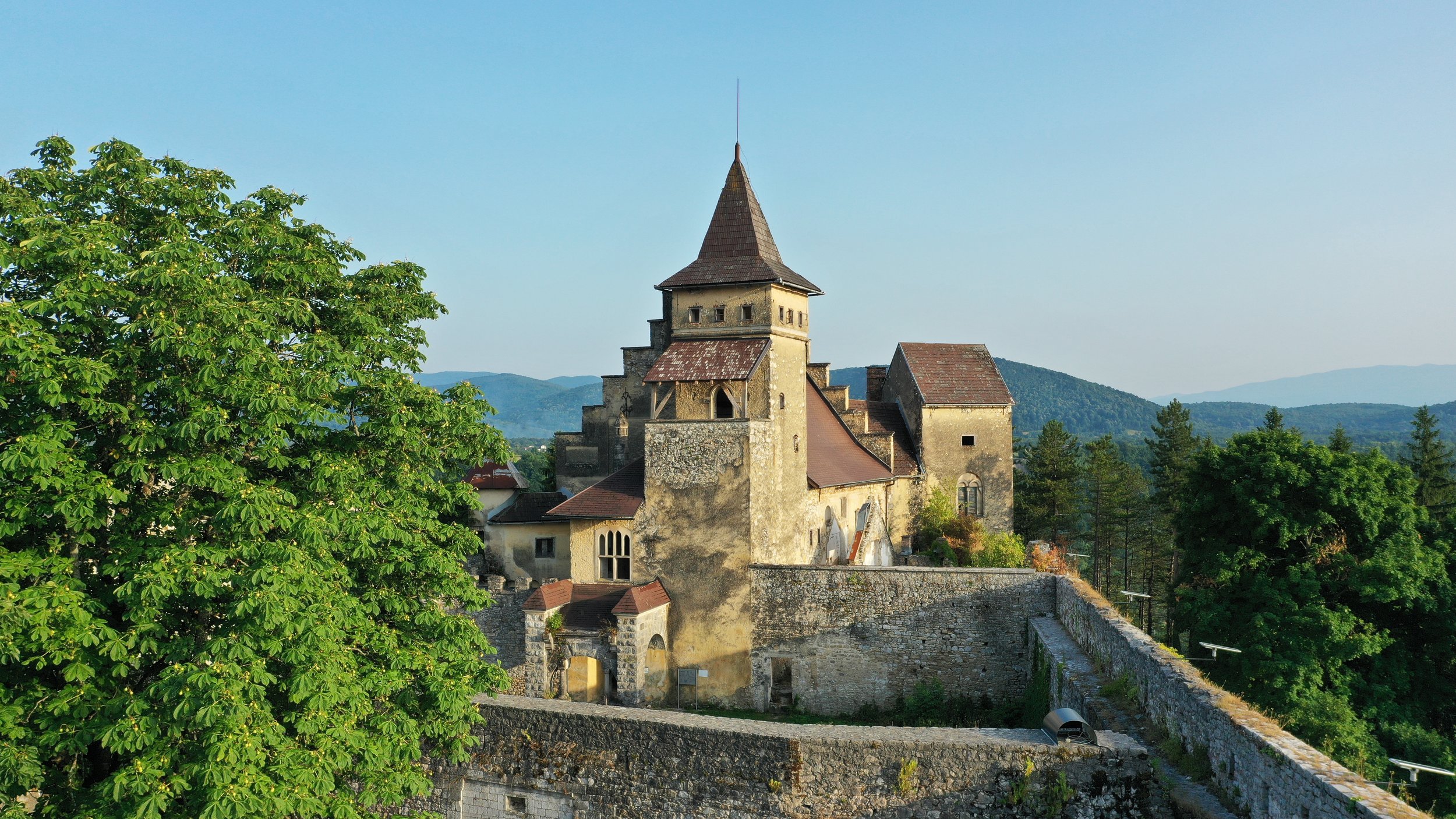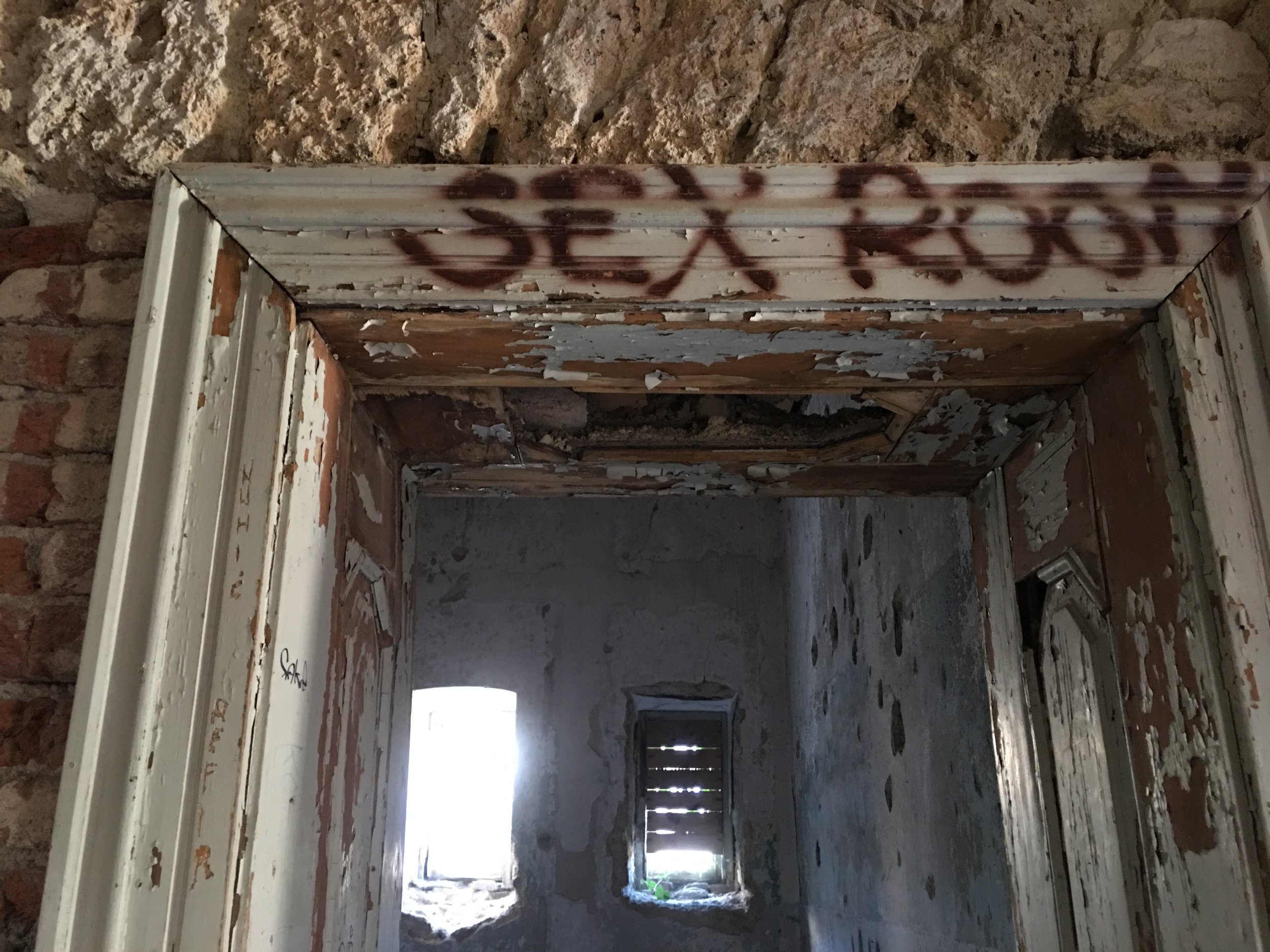Ostrožac // The Berks in the Castle
© Stepo Dinaricus // Shutterstock.com
Ruins are ten a penny. This isn’t literally true because all idioms require imagination, but the implication is valid. I’m not just talking about Bosnia and Herzegovina either, I’m talking about all the lands across this vast orb of ours. Wales has no shortage of ruins. So does Slovenia. So does the emotional landscape of the billions lucky enough to land a roster spot on the planet. A Song to Ruin is a tremendous album.
I’m jumping off course somewhat. The original point was that ruins are not unique, and ruin fatigue is very much a thing. Seen one, seen ‘em all, right? Wrong, you presumptuous dork. Each ruin is unique. Each has its own story, a tale that took it from magnificence to obliteration. Not all ruins are created equal, and some ruins are more awesome than others.
This brings us to Ostrožac.
© John Bills
First, the skeleton. Ostrožac was constructed many moons ago, we’re talking a good eight centuries of moons, by the noble Babonić family in the 13th century. You don’t need to be a master planner to see why it was built in the spot it was; the views do the work for you. Wealthy life prevailed for a while before Antun Bakšić took over in 1552, just in time for the Ottomans to rumble into town 25 years later and capture the place. Expansions came, new fortresses, developments, cannons, the lot. By 1836 it was a mudirluk under the control of Bihać, but the year noted should give a clue as to how long the Ottomans had left in charge. Not long, for the record. Murad-beg Beširević was the last captain, but his issues with the Sultan’s reforms saw him expelled. His grandson took over, eventually selling what was left of the neglected fortress to Isabella von Berks. Timelining through the century to century history of the place holds little value here because there is only so much one can write about rich people living in castles. Disney has already covered most of it, after all.
But the Berks were different.
Yes, the Berks.
We’ll start with Lothar. He wasn’t the first Berk, but he is the central Berk of this story. I’m going to use a little creative freedom and say that he was an eccentric old man, because aren’t all old men eccentric? They should be. Lothar was deaf as a post in that elderly sort of way, the consequence of a post-retirement decision to become station supervisor at the train station in Zidani Most (Slovenia). Don’t question it. Lothar joked about his lack of hearing, so there’s no need to feel too bad about it all. That is, of course, unless you subscribe to the idea that we joke to mask our sadness.
© John Bills
But yeah, Lothar Berk. Born in Sunja in 1850, he had what is best described as a life. Lothar founded the Bosnia and Herzegovina Mountaineering Society. He was the Chief of Police in Sarajevo. He was mayor of Brčko. An Imperial Knight. I’m going to guess he was good at riding horses, told great stories at parties. Lothar was famous for his joking, a commitment to comedy and the belief that laughter is the best medicine. In fact, there is a quite adorable comment on the official Ostrožac website that loosely translates as “He was very witty and often in a good mood for jokes. The family wasn’t always safe.” Gorgeous. No matter the details of his story, his road eventually wound its way to Bihać, where the family took over control of administrative details and the like.
Bihać is a beautiful place, but it wouldn’t be outlandish to say that turn of the century, Bihać wasn’t exactly thriving. Despite their lofty status, the Berks weren’t overly chuffed with their living conditions. By ‘the Berks’, I generally mean Isabella, Lothar’s wife. A big daydreamer, Isabella just couldn’t get used to looking out the window and seeing the hustle and bustle of the central Bihać market. She wanted serenity. She wanted a dream home.
There is no such thing as a forever home. Unless you’re talking about the grave or the urn, but even those resting spots take a liberal meaning of ‘forever’.
© Sadmir Mustafic // Shutterstock.com
The Berks toured the Bihać region over and over again, searching for Isabella’s dream home. 27 tours, according to legend, but the search wasn’t in vain. They finally stumbled upon Ostrožac, or at least what remained of Ostrožac after years of Ottoman neglect. Isabella fell deeply in love with the spot, famously claiming that “this is the most beautiful that could exist for our future home.”
She wasn’t wrong. Slobodan and I had stopped at Ostrožac on our way to Bosanska Krupa, and my expectations weren’t exactly sky-high. A ruined castle, great. I expected the usual rubble and dismay, accentuated by stunning views and a pervading sense of regret.
Ostrožac is not the usual rubble and dismay, and that is entirely down to the Berks. Well, the Berks and the people they paid to do the renovations. I’m guessing they didn’t have to explain everything to Dion Dublin first, although find me a cheerier image in all of history, and I’ll be a happy man. Lothar and Isabella, wandering through the ruins of Ostrožac, gazing at the ceilings in an absent-minded fashion before Lothar tells the former Premier League Golden Boot winner that he’ll be doing most of the work himself to keep the budget down.
© John Bills
Fast forward two years, and what have the Berks done with the 13th-century castle just outside Cazin? Well, they pumped their savings into it and created magic, designing a mega-mansion straight out of a dream. The corridors sparkled, and each adjoining room served a specific function. An extensive library, music parlours, lounge rooms with hunting trophies, ornate furniture everywhere, lavish beds, a vast art collection, beautiful portraits and an undeniable aura of opulence. Isabella Berks dreamt of a castle above the most beautiful river in Bosnia and Herzegovina, and that is just what Isabella Berks got. A grandiose mansion fortress. The perfect place for massive banquets and all the daydreaming one could conjure up.
It didn’t last. Does anything? Lothar died in 1920, a few days before Christmas. Time brought rust and insecurity, and the family fled the castle when World War II became ever inevitable. The Partisans and Ustaše took turns occupying it during the war. In the late ‘60s, it was turned into a sculptor’s colony, and many impressive artworks remain dotted around the courtyard today.
Those sculptures are all that remain intact. Ostrožac today is a complex of decrepitude, a warren of dilapidation, a middle finger in the face of graceful daydreaming. The music parlours and banquet rooms of yesterday are husks, today defaced with vulgar graffiti and an inescapable feeling of disenchantment. It remains utterly beautiful because fluency is often resistant to the rigours of time. Ruins are ten-a-penny, but Ostrožac is one of a kind.




